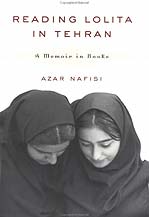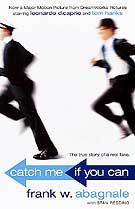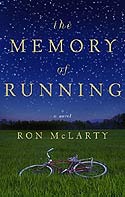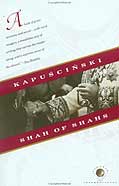
In Tehran, Iran, for two years during the late 1990s, literature professor Azar Nafisi conducted a secret class in her home for 7 women students. The class was about literature and read from works of Nabokov, Henry James, Fitzgerald, Jane Austin, and others. Reading Lolita in Tehran is professor Nafisi’s memoir of those years and those that came before, as Nafisi struggled to teach literature whose very characters and stories more often than not offended the Islamic authorities. Reading Lolita alternates between being a social history of modern Iran and the challenges for women to retain their dignity in a repressive Islamic state, and an inquiry into the power of fiction to open our eyes and give our lives meaning. Nafisi follows the lives of her students – their stories, fears, struggles, and triumphs – as each comes to terms with their lives and roles in the world. Ultimately many, like Nafisi, will choose to leave Iran, rather to continue to live in a culture where so much of their lives are proscribed.
Reading Lolita in Tehran is beautifully written. Anyone who cherishes literature will not only appreciate the subject matter, but the lyrical manner in which it is written. Highly recommended.

“It’s not Disney,” explained one child upon being asked why he liked Lemony Snickett’s dark and dismal Series of Unfortunate Events. Kids seem to love this book series about the three Baudelaire children – Violet, Klaus, and Sunny – whose parents died tragically in a fire and who spend most of their time trying to evade the evil Count Olaf, a master of disguises who plots to steal the orphan’s fortune. Violet is the oldest with a knack for inventing, Klaus the younger boy who loves to read and study, and Sunny, the baby with 4 exceptionally strong and sharp teeth. The books in the series have predictable plots. In each, Mr. Poe, the Baudelaire’s hapless executor, appoints a guardian who is often a distant relative of the children who proves to be incapable of keeping Count Olaf away. The adults in the stories are all fooled by the Count’s disguises and don’t listen to the children who are never fooled. It’s up to Violet, Klaus, and Sunny to figure out the Count’s nefarious plan before he can implement it and abscond with the children. It always takes the three kids working together to foil the Count’s plans.
Continue reading →

Catch Me If You Can by Frank Abagnale is an amazing true story of the adventures of a master con artist and check forger. Of all the books I’ve “read” from Audible.com, this is among the most enjoyable. In his late teens, Abagnale posed as a PanAm co-pilot, getting lifts on airplanes for free to take him all around the country and the world, allowing him to pass bad checks behind the guise of a respectable airline pilot. By the time he was caught, at age 21, he had managed to bilk his victims, mostly PanAm, of over 2 million dollars. At that was 2 million in the late 60s, when the story took place. Posing as Frank Williams, Robert Conrad, Frank Adams, and Robert Monjo, Abagnale also managed to teach sociology at a college in Utah with a fake diploma, pass the bar exam and work in an attorney general’s office, pose as a pediatrician and become a temporary resident supervisor at a hospital in Georgia.
Continue reading →

Smithy Ide is a 43 year old drunk – overweight, friendless, and when he can think, disgusted with himself. After the funeral of his parents who die in a car accident, Smithy finds an unopened letter to his parents from a mortuary in California. The letter says that the mortuary is holding the body of Smithy’s sister Bethany, an indigent whose identity they’ve been able to match with dental records. Still in a drunken fog, Smithy finds his old Raleigh bike in their garage, and sets off down the road, flat tires as all. Thus he unintentially sets off on a bike journey across the country and in the process comes to terms with his life and the loss of his beautiful sister who couldn’t escape the voices in her head.
Continue reading →

September 11th made it clear that thousands of Afghans that we had armed and trained had become terrorists with the US now in their sights. How did Afghanistan become a training ground for terrorists? George Crile’s Charlie Wilson’s War is the story of how one man, U.S. Congressman Charlie Wilson, Rep. Texas, almost single-handedly launched the several billion dollar CIA operation in Afghanistan to force out the occupying Soviets, without a vote in Congress, and without the clear approval of the President. What started as barely a nuisance campaign turned into the greatest covert operation in CIA history.
Continue reading →

In Shah of Shahs Polish journalist Ryszard Kapuscinski turns his focus to the former Shah of Iran, the CIA supported dictator whose oppressive regime led to the revolution that took Americans hostage in their own embassy, caused the shah’s exile, and resulted in the fundamentalist Islamic government that runs Iran today. Kapuscinski published this book in 1982, just a few years after the revolution. In his unique style Kapuscinski weaves history, stories of individuals, and his own observations and interpretations.
It seems as if in every oppressive regime, there is a police authority, a spy network that detains and tortures anyone suspected of not being loyal to the ruling regime. In Iran, that group of thugs was the Savak.
Continue reading →





